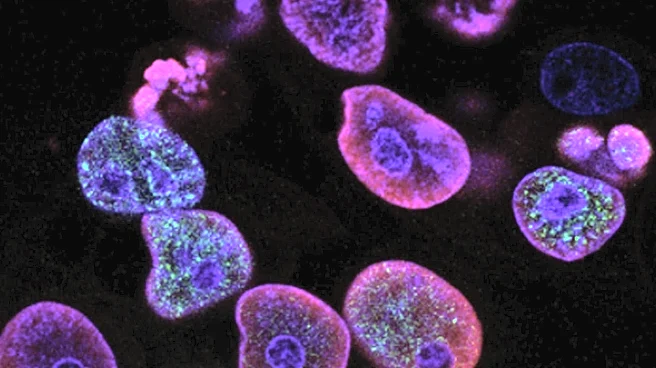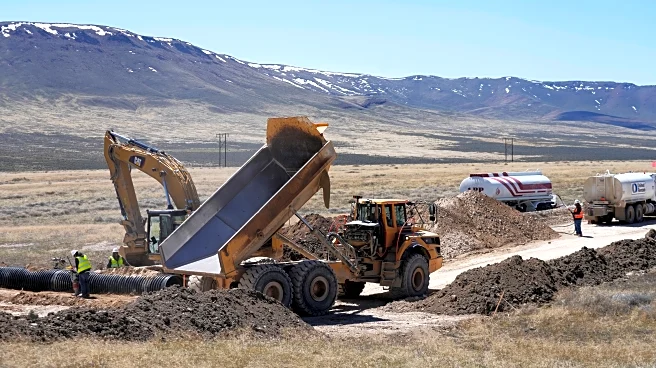What is the story about?
What's Happening?
Researchers at the Department of Energy's Pacific Northwest National Laboratory have discovered that ice, despite its hexagonal lattice structure, exhibits surprising flexibility and malleability. This finding was made through molecular-resolution observations of nanoscale samples of ice frozen from liquid water, published in Nature Communications. The study highlights how ice can tolerate structural defects and trapped gas bubbles without fracturing, a property that distinguishes it from other solids. This flexibility is attributed to the unique nature of water's chemical bonds, which allow ice to adapt to imperfections with ease. The research opens new avenues for exploring ice crystallization and melting behavior, with potential implications for cryopreservation, aviation safety, and glacier dynamics.
Why It's Important?
The discovery of ice's flexibility at the nanoscale has significant implications for various fields. In cryopreservation, understanding ice's ability to tolerate defects could improve the preservation of biological tissues. For aviation, insights into ice behavior can enhance safety measures against ice formation on aircraft. Additionally, the study of glacier dynamics may benefit from this knowledge, as trapped air bubbles in ice can affect melting rates. The research also contributes to a deeper understanding of ice's role in supporting life on Earth, given its less dense nature compared to liquid water. Overall, this finding could lead to advancements in scientific research and practical applications in industries reliant on temperature-controlled environments.
What's Next?
Future research will focus on studying the melting process and working with more complex samples, including water with dissolved materials. The team plans to explore how ice crystallization and melting behavior can be manipulated at the nanoscale, potentially leading to new technologies and methods for managing ice-related challenges. Collaborations with other research institutions may further validate these findings and expand their application across different scientific domains.
Beyond the Headlines
The study of ice's flexibility at the nanoscale raises ethical and environmental considerations, particularly in the context of climate change and its impact on glaciers. Understanding ice dynamics could inform policies aimed at mitigating the effects of global warming. Additionally, the research highlights the importance of interdisciplinary collaboration in advancing scientific knowledge, as demonstrated by the partnership between Pacific Northwest National Laboratory and other institutions.
AI Generated Content
Do you find this article useful?














